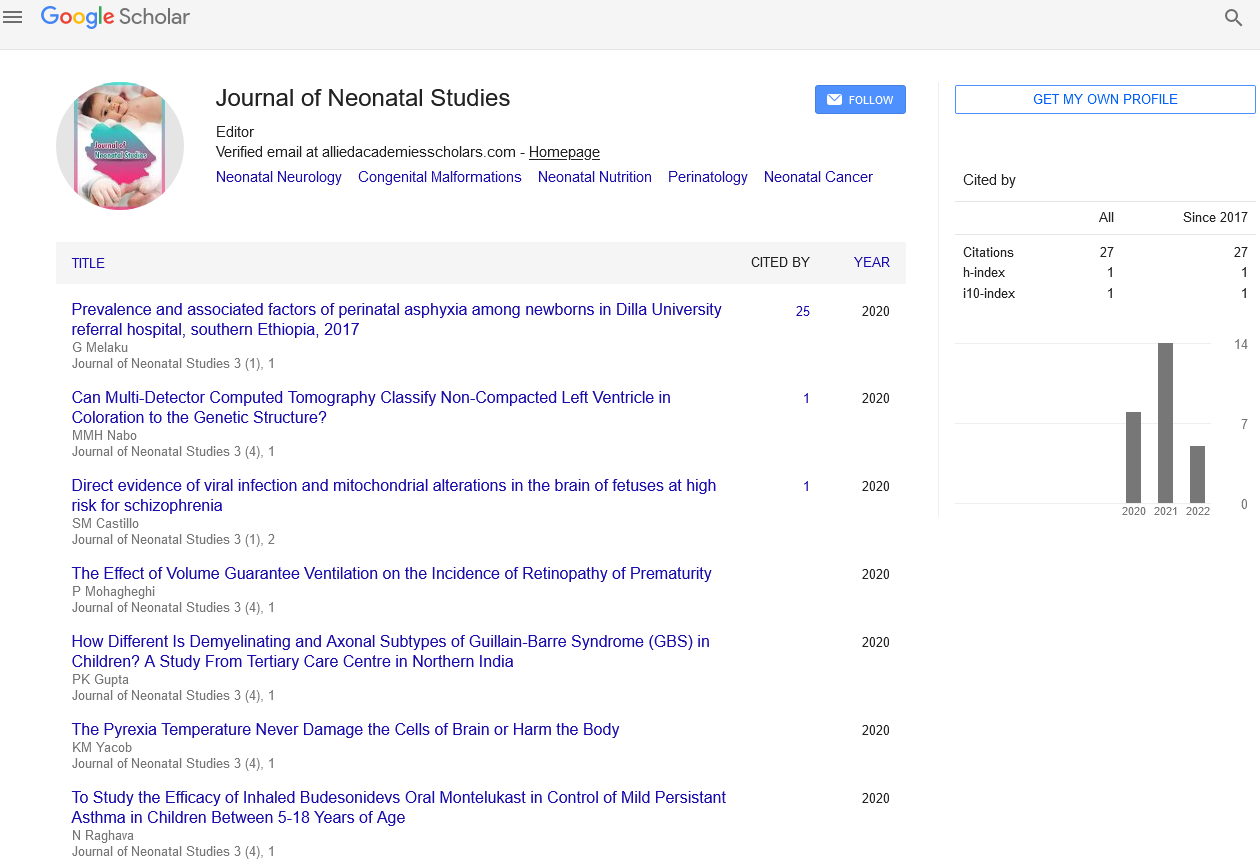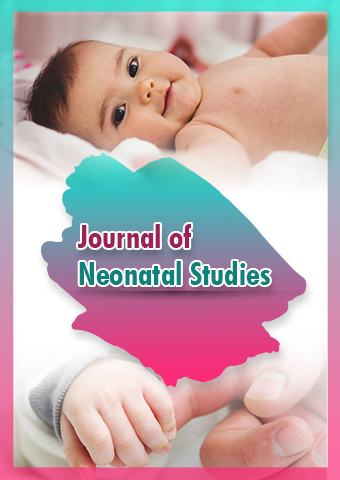Perspective - Journal of Neonatal Studies (2024) Volume 7, Issue 6
Thermoregulation in Neonates: A Critical Balance
- Corresponding Author:
- Abdul Kareem
Department of Neonatology, Sudan University of Science and Technology, Sudan
E-mail: Abdul.Kareem@sustech.edu
Received: 04-Nov-2024, Manuscript No. JNS-24-150543; Editor assigned: 06-Nov-2024, PreQC No. JNS-24-150543 (PQ); Reviewed: 20-Nov-2024, QC No. JNS-24-150543; Revised: 24-Dec-2024, Manuscript No. JNS-24-150543 (R); Published: 31-Dec-2024, DOI: 10.37532/JNS.2024.7(6).304-305
Introduction
Thermoregulation is the process by which an organism maintains its core internal temperature. For neonates, this process is particularly vital due to their vulnerability and the significant impact that even minor temperature changes can have on their health.
Description
Importance of thermoregulation in neonates
Neonates, especially preterm infants, have immature thermoregulatory systems. Their ability to generate and maintain body heat is limited, which makes them highly susceptible to both hypothermia and hyperthermia. Effective thermoregulation is crucial for minimizing energy expenditure and promoting optimal growth and development.
Physiology of neonatal thermoregulation
Metabolic heat production: Neonates produce heat primarily through non-shivering thermogenesis, a process that involves the metabolism of Brown Adipose Tissue (BAT). BAT is rich in mitochondria, which generate heat by oxidizing fatty acids. This process is critical in neonates as they cannot shiver effectively to produce heat.
Heat loss mechanisms: Neonates lose heat through four main mechanisms:
• Convection: Transfer of heat from the skin to the surrounding air.
• Conduction: Direct transfer of heat from the skin to cooler surfaces in contact with the
neonate.
• Radiation: Loss of heat to cooler objects in the environment, not in direct contact with the
neonate.
• Evaporation: Loss of heat through the evaporation of water from the skin and respiratory
tract.
Factors affecting neonatal thermoregulation
Gestational age: Preterm infants have a higher risk of hypothermia due to their thin skin, limited BAT, and reduced ability to produce heat. The smaller size and higher body surface area-toweight ratio of preterm infants also contribute to greater heat loss.
Birth weight: Low birth weight infants are more prone to temperature instability due to limited fat stores and decreased insulation.
Environmental temperature: The temperature of the environment plays a critical role. Neonates need to be in a thermoneutral environment where they can maintain a stable core temperature with minimal metabolic effort.
Medical conditions: Certain medical conditions, such as sepsis, respiratory distress syndrome, and congenital anomalies, can impair thermoregulation. These conditions increase the risk of temperature instability and related complications.
Strategies for maintaining optimal temperature
Delivery room practices: Immediately after birth, neonates are dried and placed on a pre-warmed surface to prevent heat loss. The use of radiant warmers and thermal blankets helps maintain a stable temperature.
Incubators and radiant warmers: For preterm and low birth weight infants, incubators and radiant warmers provide a controlled environment. These devices maintain a thermoneutral zone, minimizing heat loss and energy expenditure.
Skin-to-skin contact: Kangaroo care, or skin-to-skin contact, is an effective method for maintaining neonatal temperature. This practice not only promotes thermoregulation but also supports bonding and breastfeeding.
Humidified incubators: Humidified incubators reduce evaporative heat loss, especially important for very preterm infants with immature skin.
Clothing and bedding: Appropriate clothing and bedding help insulate the neonate. It’s important to avoid overheating, so layers should be adjusted according to the environmental temperature.
Monitoring neonatal temperature
Continuous monitoring of neonatal temperature is essential to detect and address any deviations promptly. Common methods include:
Axillary temperature: Measuring the temperature in the axilla (underarm) is non-invasive and commonly used in clinical practice.
Skin probes: Skin probes provide continuous temperature monitoring and are often used in intensive care settings.
Core temperature monitoring: Invasive methods, such as rectal or esophageal temperature probes, provide accurate core temperature measurements. These are typically used in critical care situations.
Consequences of poor thermoregulation
Hypothermia: Defined as a core body temperature below 36.5°C (97.7°F), hypothermia can lead to increased oxygen consumption, metabolic acidosis, hypoglycemia, and impaired coagulation. Severe hypothermia can be life-threatening.
Hyperthermia: A core body temperature above 37.5°C (99.5°F) can cause dehydration, electrolyte imbalances, and increased metabolic demands. Hyperthermia can result from overheating in incubators or warm environments.
Conclusion
Thermoregulation is a critical aspect of neonatal care, with significant implications for the health and development of infants. Ensuring that neonates maintain an optimal body temperature involves a comprehensive approach, from delivery room practices to continuous monitoring and appropriate interventions. By understanding and managing the unique thermoregulatory challenges faced by neonates, healthcare providers can help ensure the best possible outcomes for these vulnerable patients.

